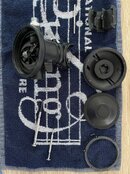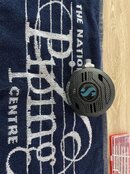DavideShardana
Registered
Finish to service my regulator R190. I was not able to unscrew the bolt on the right completely and check the valve but the problem was wet breathing, so I checked the diaphragm and exhaust valve which were ok, clean everything and applied a bit of Vaseline everywhere.
To be noted all technicians/shop in my city refused to service my equipment because it’s too old
Mk10 first stage, d400 and R190 second stages. All Scubapro.
To be noted all technicians/shop in my city refused to service my equipment because it’s too old
Mk10 first stage, d400 and R190 second stages. All Scubapro.






